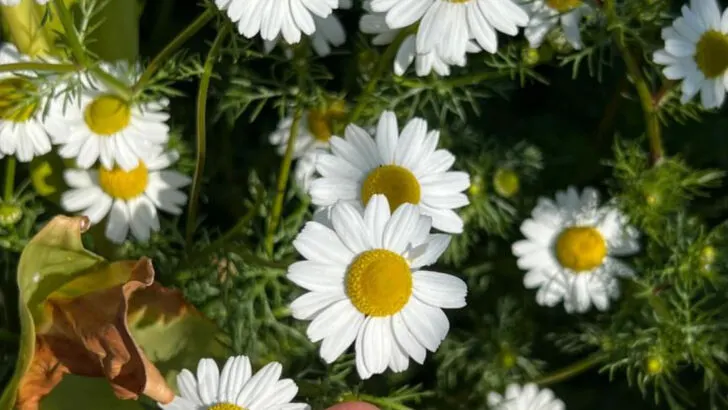Who says beauty and function can’t grow in the same pot? Edible flowers are the perfect combination of form and flavor—they brighten up your garden and your plate. With their vivid colors, delicate petals, and subtle fragrances, these blooms are almost too stunning to eat… almost.
At Plantisima, we’re always looking for ways to make gardening more joyful, creative, and delicious. These 17 edible flowers not only attract pollinators and add charm to your outdoor (or indoor) space, but they’re also surprisingly versatile in the kitchen—from salads to cocktails to desserts. If you’ve never grown flowers you can actually taste, this is your sign to start.
Whether you’re dreaming of a cottagecore-inspired garden, want to impress guests with your next dish, or just love growing plants with a purpose, these blooms are too pretty—and too tasty—not to plant. Get ready to turn your garden into a flavorful floral fantasy.
Nasturtium
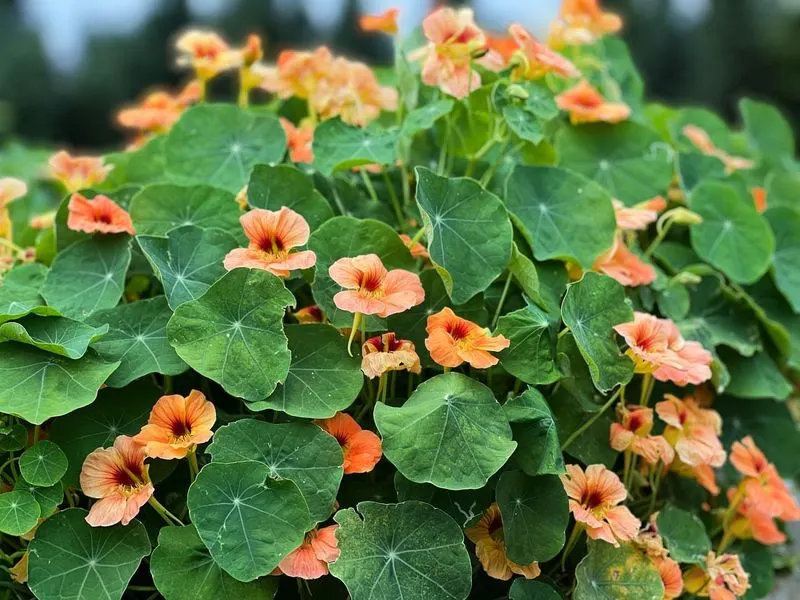
A splash of color on the plate, nasturtiums bring a peppery zest reminiscent of watercress. Their vivid hues ranging from sunny yellows to fiery oranges are as enticing as their taste. Nestled among leafy greens or perched atop a cake, they captivate with both visual and flavor appeal. Historically, nasturtiums were cherished for their medicinal properties, believed to boost immune health. Beyond aesthetics, they offer nutritional benefits rich in Vitamin C. A garden adorned with these blossoms is one brimming with vibrancy and utility. Truly, they are a gardener’s delight, both in appearance and in purpose.
Pansy
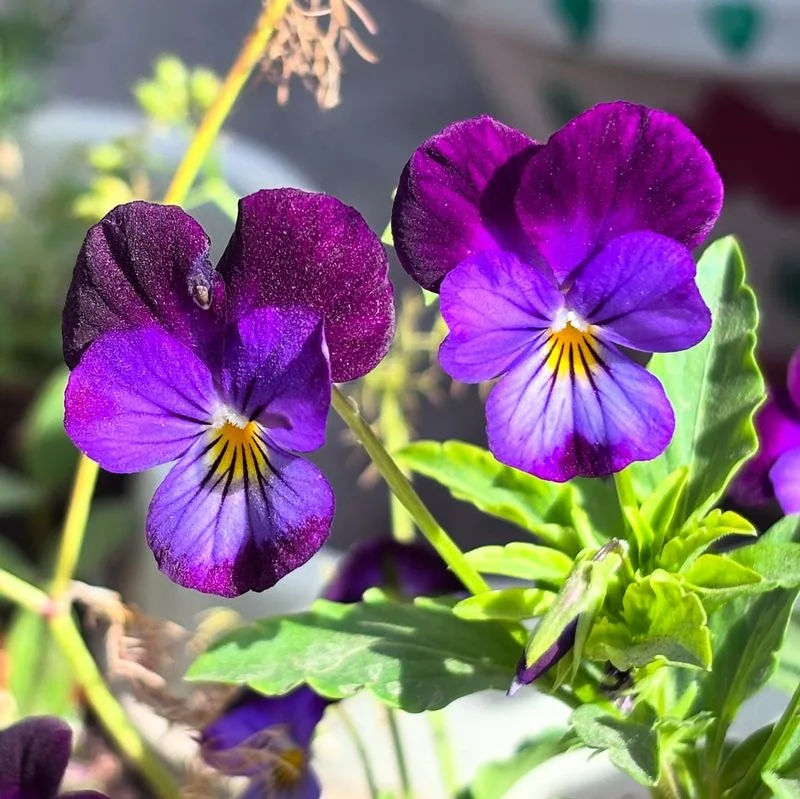
Their cheerful faces brighten any garden bed, and on a dish, they bring a mild, sweet aroma. Pansies are versatile, their colors as varied as a painter’s palette. They blend beautifully in salads or crystallized atop desserts. Known for their resilience, pansies thrive in cooler climates, making them a favorite for many. In folklore, they symbolize thoughtful reflection. Their beauty is matched by their subtle flavor, which complements both sweet and savory dishes. Pansies are more than just a flower; they are a statement of elegance and simplicity in any culinary creation.
Calendula
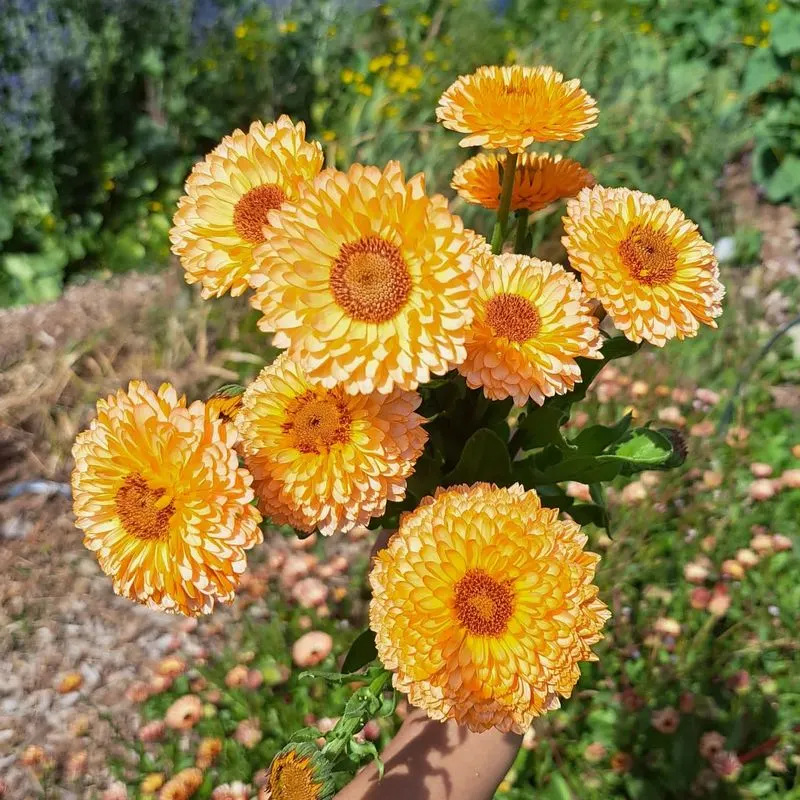
Often dubbed the ‘poor man’s saffron,’ calendulas add a golden hue and peppery taste to dishes. Their petals have long been used in soups, stews, and herbal infusions. Beyond the kitchen, they are praised for skin-healing properties. Ancient civilizations revered calendula for its supposed magical abilities to protect and heal. When sprinkled on a salad or stirred into a risotto, they imbue a subtle warmth and color. Easy to grow and hardy, calendulas are a treasure, both for their culinary uses and their vibrant, sun-kissed appearance.
Violet
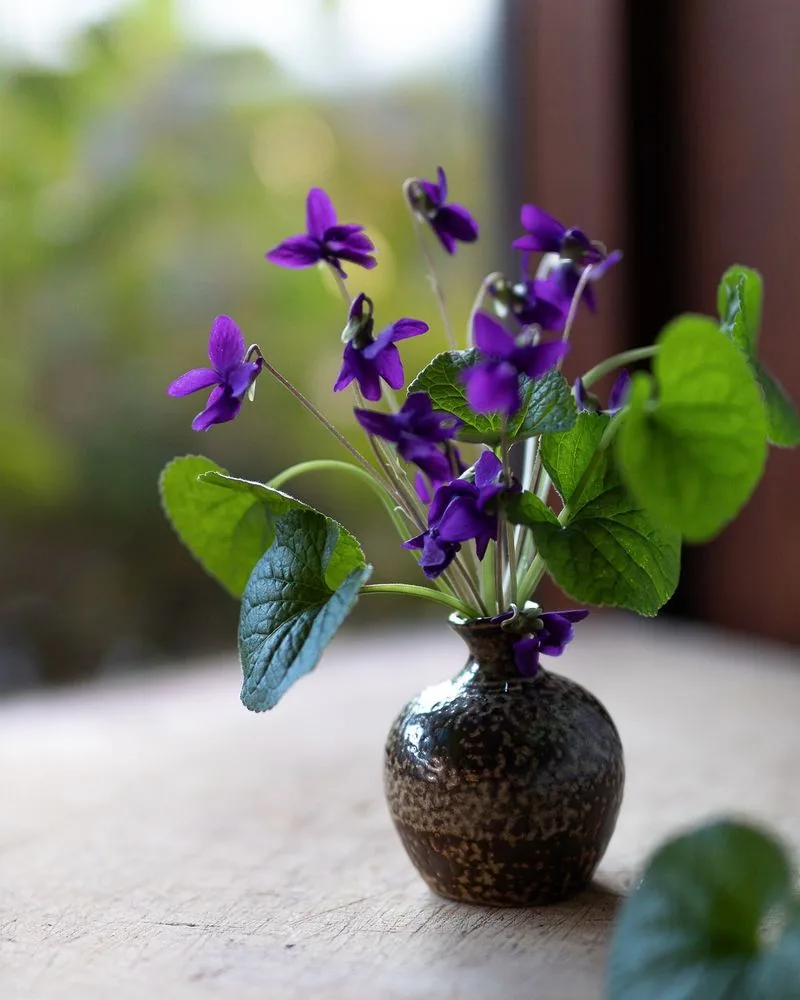
With their delicate petals and sweet fragrance, violets have charmed many over the centuries. They are often used in jellies, syrups, and as a garnish, offering a sweet floral note. In the Victorian era, violets symbolized modesty and virtue, often featured in love poems. Their vibrant purple hue adds a touch of elegance to any dish. Besides their culinary uses, violets have been employed in traditional medicine to soothe sore throats. Their dual appeal in aroma and appearance makes them a cherished addition to both gardens and kitchens.
Borage
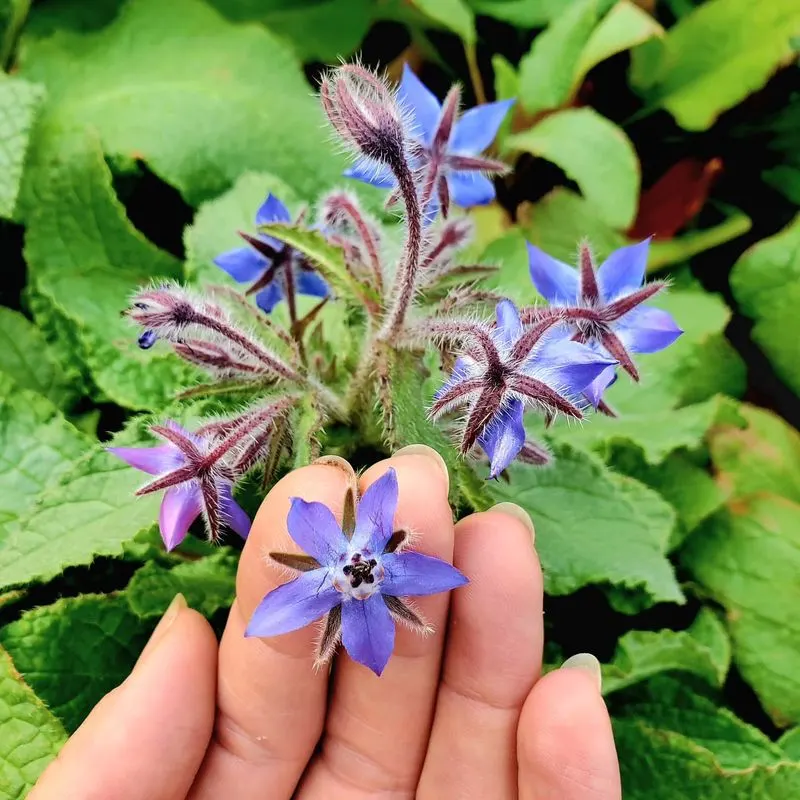
Known for its striking star-shaped blue blooms, borage adds a cucumber-like taste to dishes. It’s often floated in summer drinks or sprinkled over salads. Historically, borage was believed to give courage to warriors before battle. Today, it is lauded for its anti-inflammatory properties and as a source of essential fatty acids. The plant thrives in sunny, well-drained soils, offering a pop of color and flavor. Its unique taste and striking appearance make borage a favorite among adventurous cooks and gardeners seeking something extraordinary.
Rose
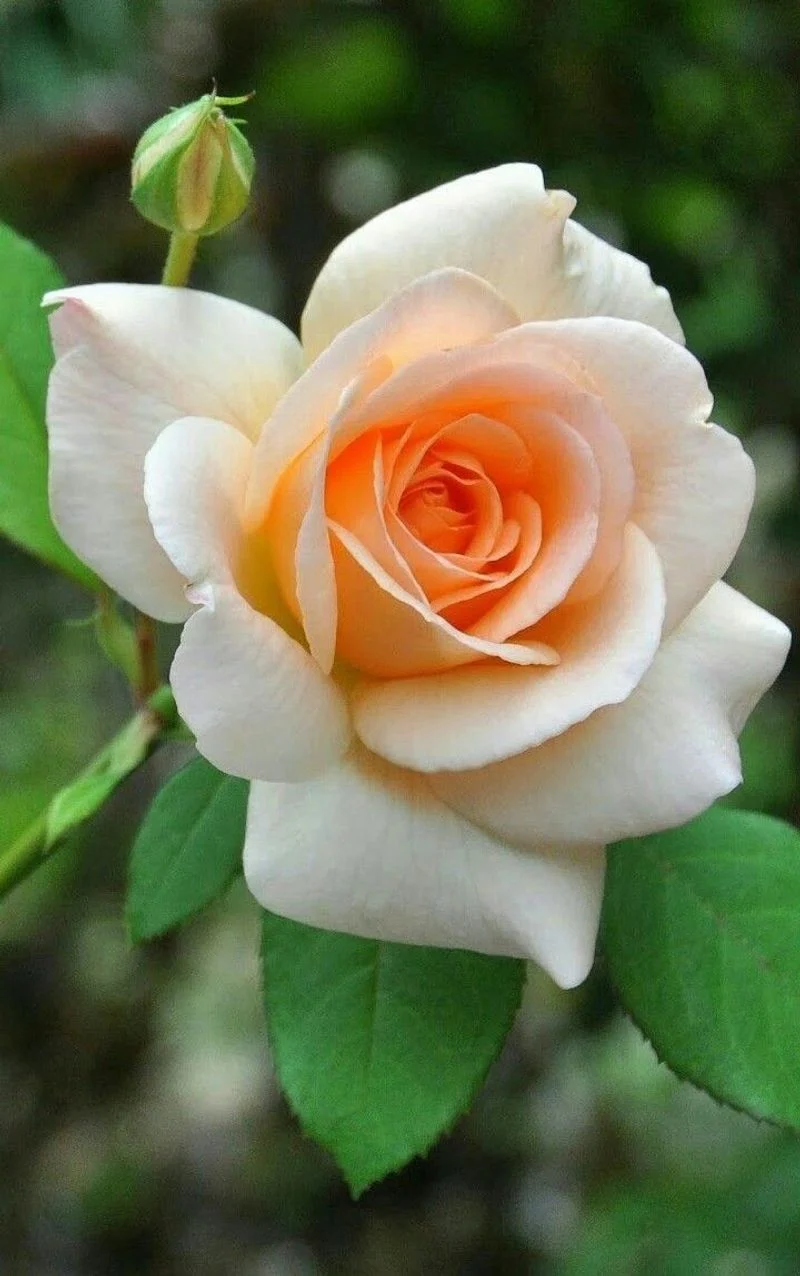
Roses, synonymous with romance, also have a place in the culinary world. Their petals infuse a delicate floral flavor and aroma into syrups, jellies, and desserts. The variety in colors and scents makes them a versatile ingredient. Historically, rose water was cherished in Middle Eastern cuisine for its fragrance. When sugared, petals can adorn cakes, creating an enchanting visual and taste experience. Roses are more than ornamental; they offer a sensory delight in every petal. A garden of roses is both a visual and gastronomic wonder.
Marigold
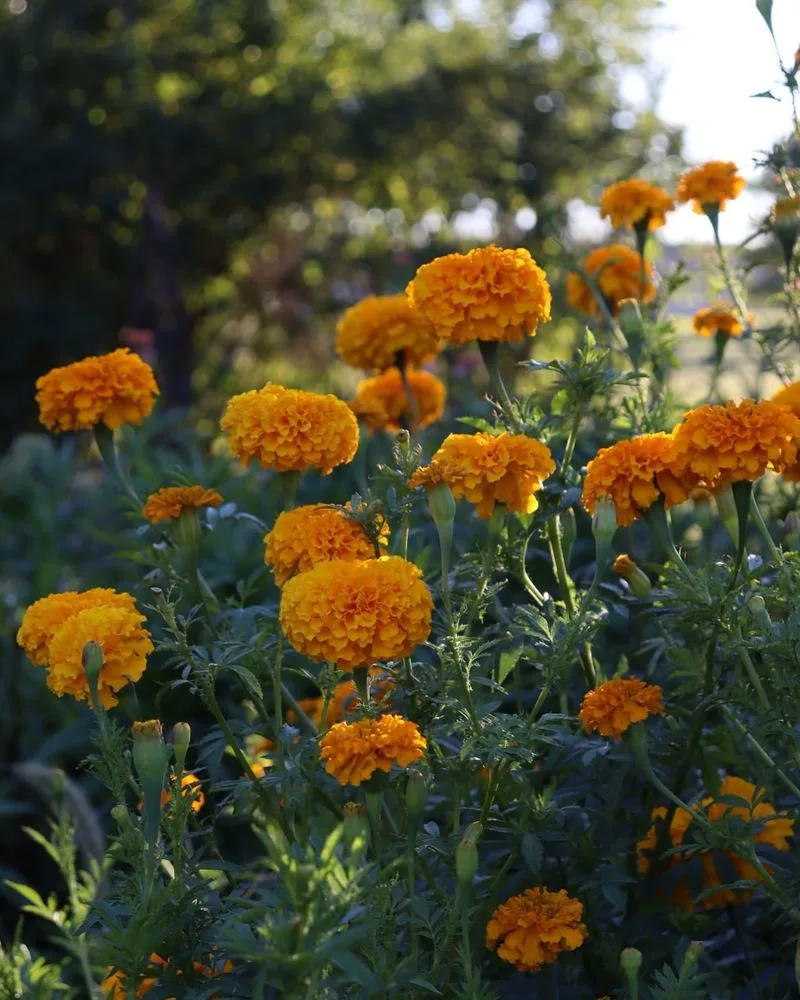
With their bold colors and citrusy taste, marigolds are often used to brighten salads and soups. Their petals mimic the color of saffron, but they carry a unique flavor profile. In many cultures, marigolds are symbols of festivity and are used in celebratory dishes. Besides their culinary uses, they are known for pest-repelling properties, making them a gardener’s ally. Their presence in a garden is both purposeful and pleasing, offering vibrant color and practical benefits. Marigolds are a perfect blend of beauty and utility.
Lavender
The calming scent of lavender is not just for relaxation; it finds its way into culinary creations too. Known for its sweet, floral flavor with hints of mint and citrus, lavender enhances baked goods, teas, and desserts. Its historical use extends to medicinal purposes, especially for stress relief. A few sprigs can transform a simple dish into a gourmet delight. Lavender’s soothing aroma and unique taste make it a beloved choice for chefs and home cooks alike. Its presence in both garden and kitchen is a testament to its enduring appeal.
Hibiscus
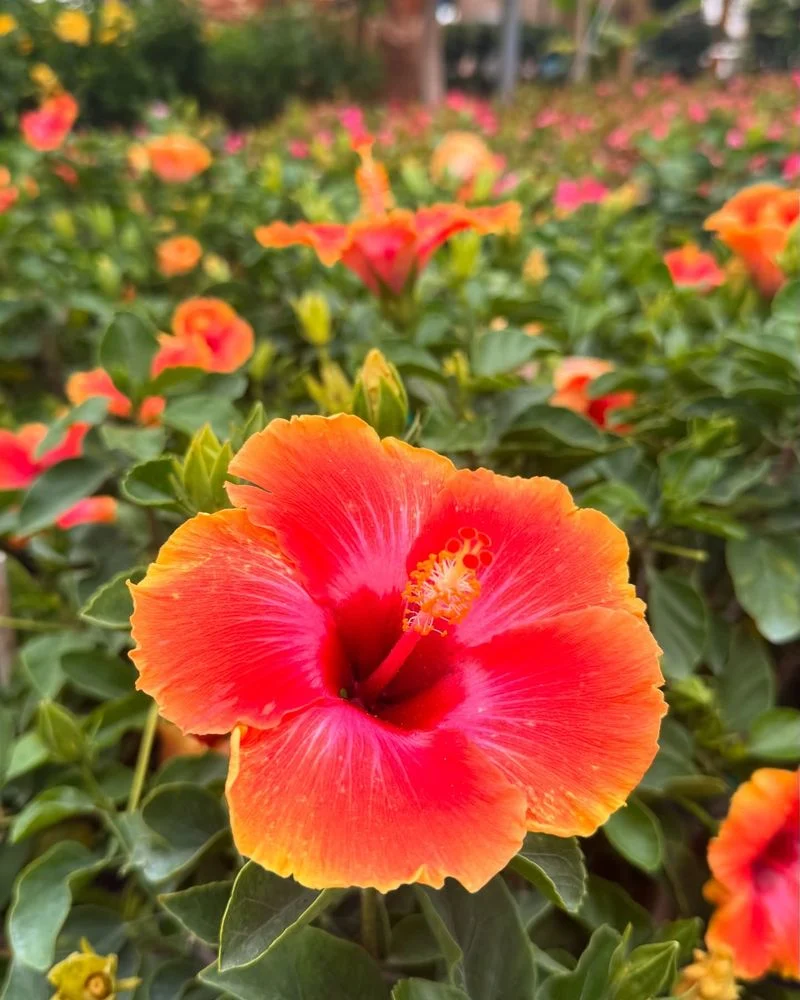
Hibiscus, with its bold, tart flavor, is a staple in teas and beverages. Its deep red petals are visually striking and add a tangy twist to recipes. In many cultures, hibiscus is associated with hospitality and is often brewed into refreshing drinks. Rich in vitamin C, it offers health benefits alongside its unique taste. The vivid color and robust flavor make hibiscus a standout amongst edible flowers. Whether in a drink or as a garnish, it brings a tropical flair to any dish, captivating taste buds and eyes alike.
Chive Blossoms
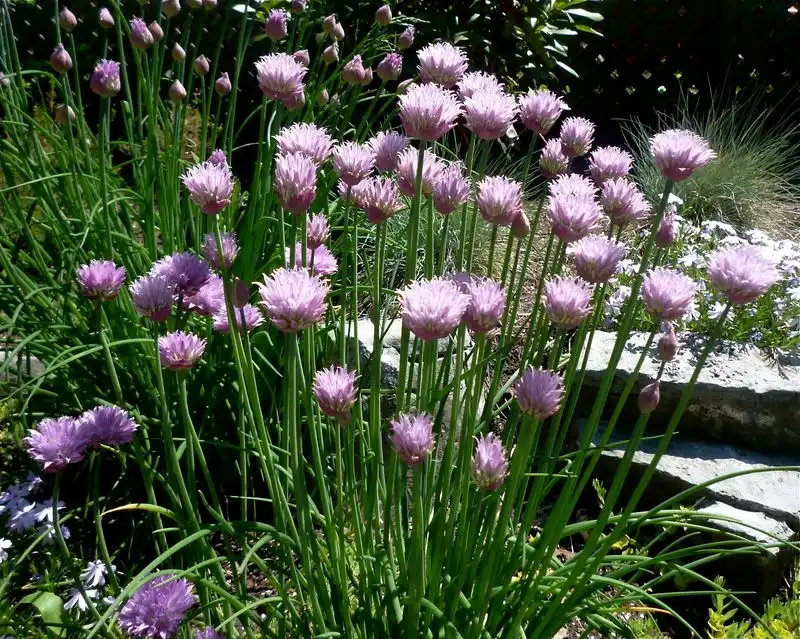
Chive blossoms, with their mild onion flavor, are a delightful addition to salads and savory dishes. These purple pom-poms are not just about aesthetics; they offer a gentle yet distinct taste that enhances culinary creations. Perfect for infusing vinegars or sprinkling over omelets, they provide both flavor and visual appeal. Easy to grow, chives thrive in various conditions, making them a gardener’s favorite. Their versatility in the kitchen, combined with their charming appearance, makes them a must-have for those looking to expand their culinary horizons.
Dianthus

Dianthus, with its clove-like aroma, adds a spicy and sweet dimension to dishes. These delicate pink blooms can be crystallized for dessert decorations or added fresh to salads. Historically, they were used in love potions and symbolized admiration. The intricate patterns on their petals make them visually captivating. They thrive in well-drained soil and prefer sunny spots. Adding dianthus to your garden ensures a steady supply of these fragrant flowers. Their versatility and enchanting appearance make them a delightful choice for both novice and experienced gardeners.
Sunflower
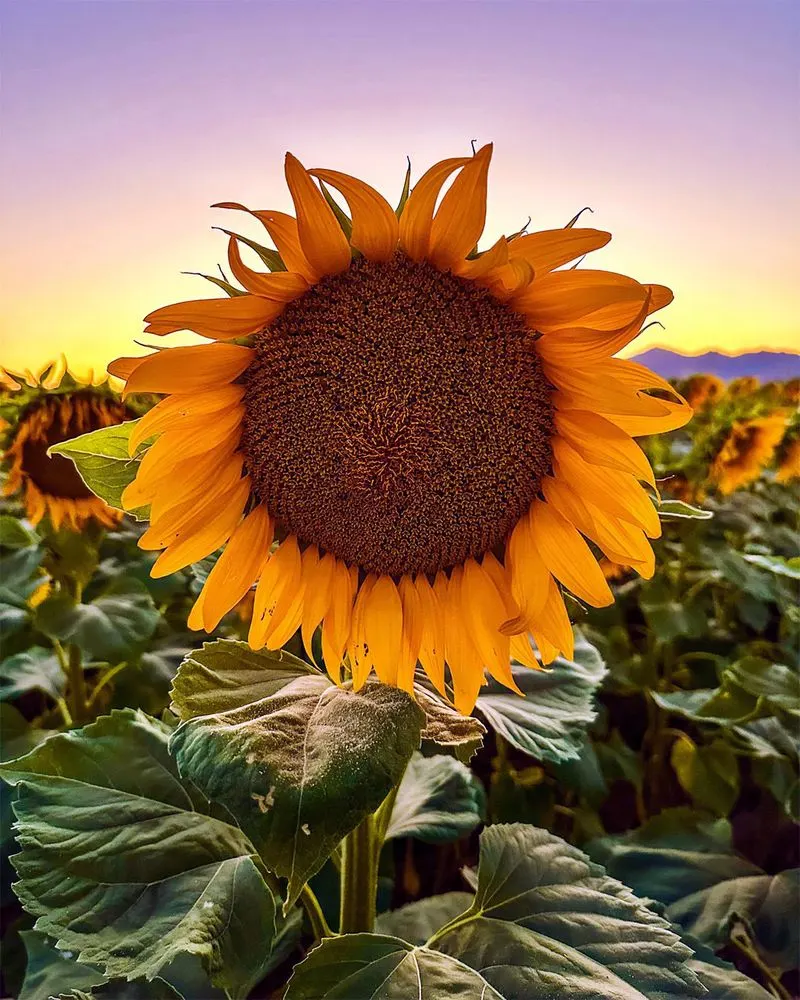
While the seeds steal the spotlight, sunflower petals have a mildly bitter flavor that can be used in salads and as a garnish. These towering giants add a touch of sunshine to any garden. Sunflowers have a rich history, revered by Native Americans for their versatility and nourishment. The presence of sunflowers in a landscape is synonymous with summer’s warmth and vitality. Beyond their beauty, they offer ecological benefits, attracting pollinators and providing seeds for birds. Their multifaceted appeal ensures they are a cherished addition to any outdoor space.
Carnation
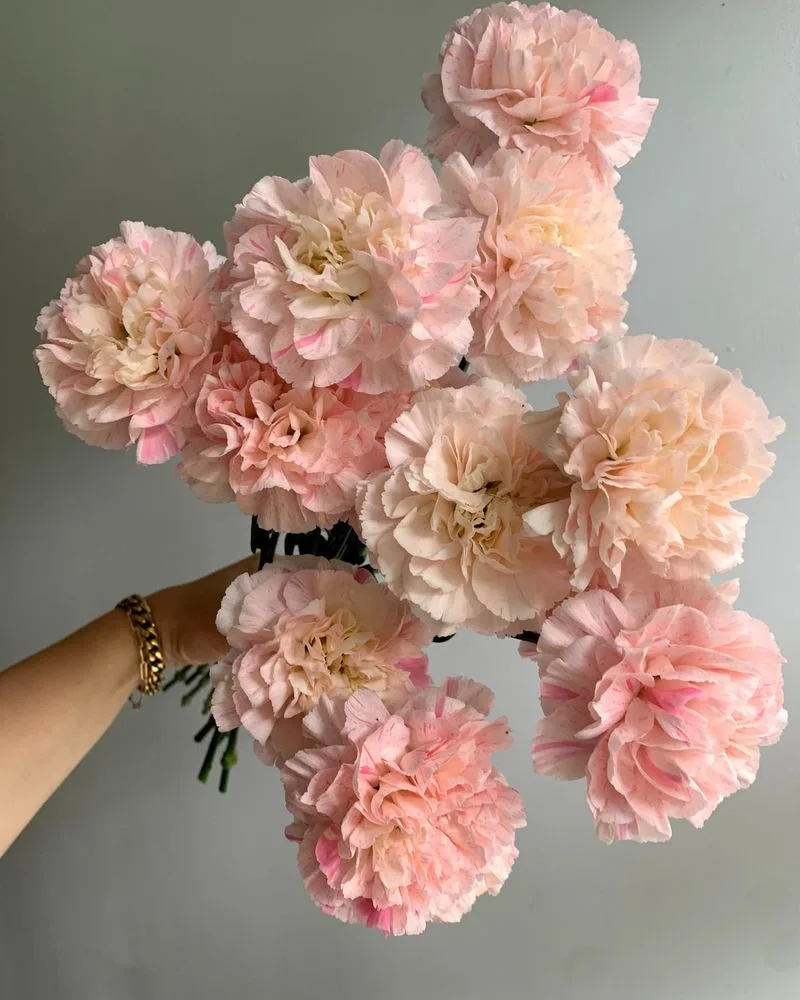
Carnations, often associated with celebrations, also have a place in the culinary world. Their petals, with a clove-like aroma, are used to flavor wines and liqueurs. In ancient Rome, carnations were used in ceremonial wreaths and garlands. Their wide range of colors and resilient nature make them a garden favorite. When sugared, they make elegant cake decorations. The use of carnations transcends mere decoration, offering both aesthetic and aromatic allure. They are a testament to nature’s ability to blend beauty with functionality, making them a unique addition to any dish.
Chamomile
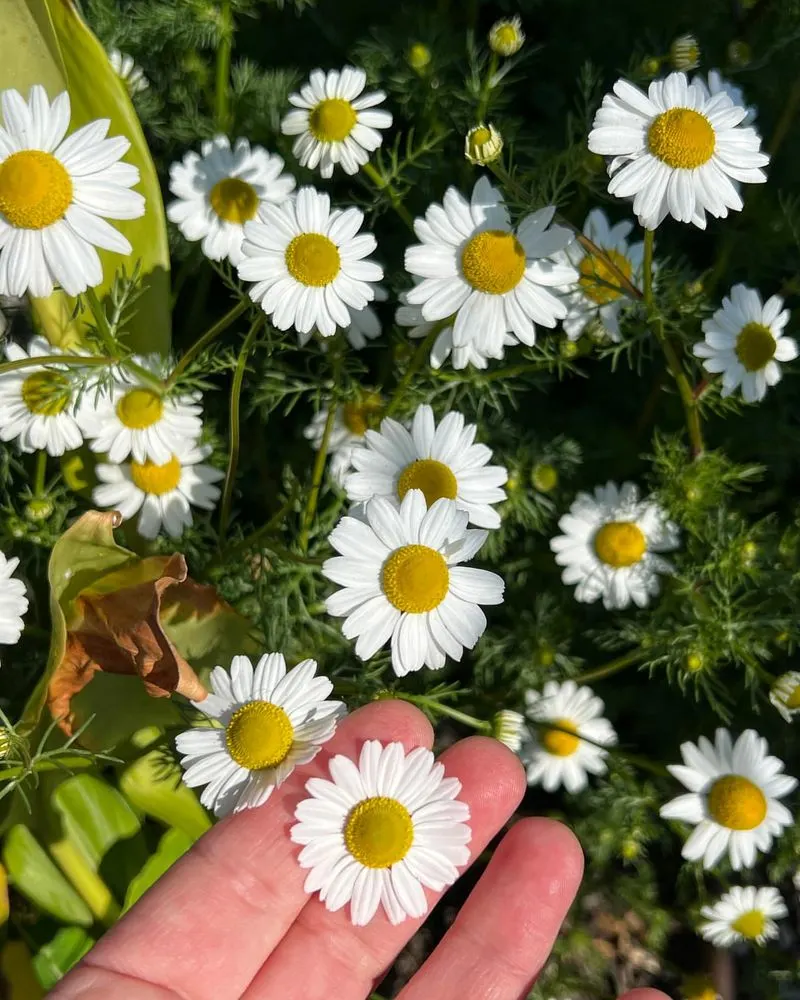
Known for its calming properties, chamomile is more than just a tea ingredient. The small daisy-like flowers add a subtle apple-like flavor to salads and desserts. Historically, chamomile has been used for its medicinal properties, especially in soothing digestive ailments. In the garden, it acts as a gentle companion, attracting beneficial insects. Its delicate appearance belies its robust nature, thriving in various conditions. Chamomile’s dual role in culinary and medicinal fields underscores its timeless appeal, making it a valuable addition to both gardens and kitchens.
Daylily
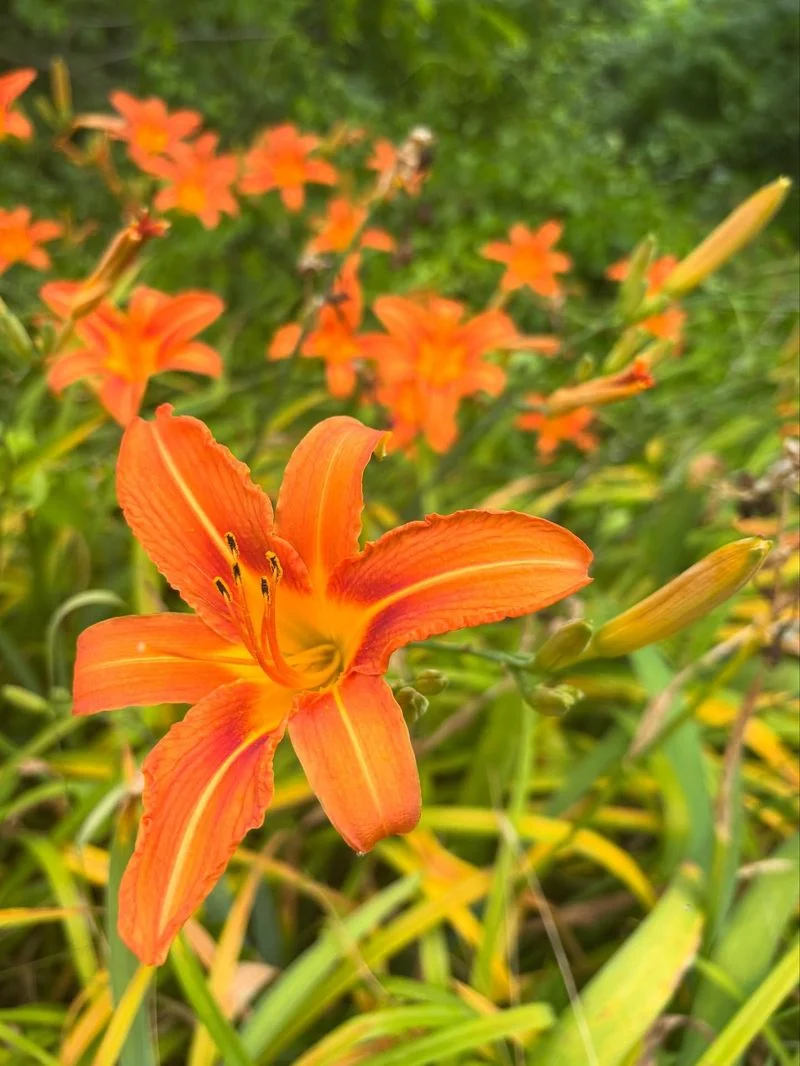
Daylilies, with their trumpet-shaped blossoms, offer a sweet and crisp flavor, perfect for salads or stir-fries. Each bloom lasts just a day, adding a fleeting beauty to the garden. In Chinese cuisine, daylilies are prized for their texture and flavor, often used in soups and stews. They thrive in well-drained soils under full sun, providing continuous blooms throughout the growing season. The ephemeral nature of daylilies is part of their charm, offering gardeners a chance to savor their beauty and taste, if only for a brief moment each day.
Anise Hyssop
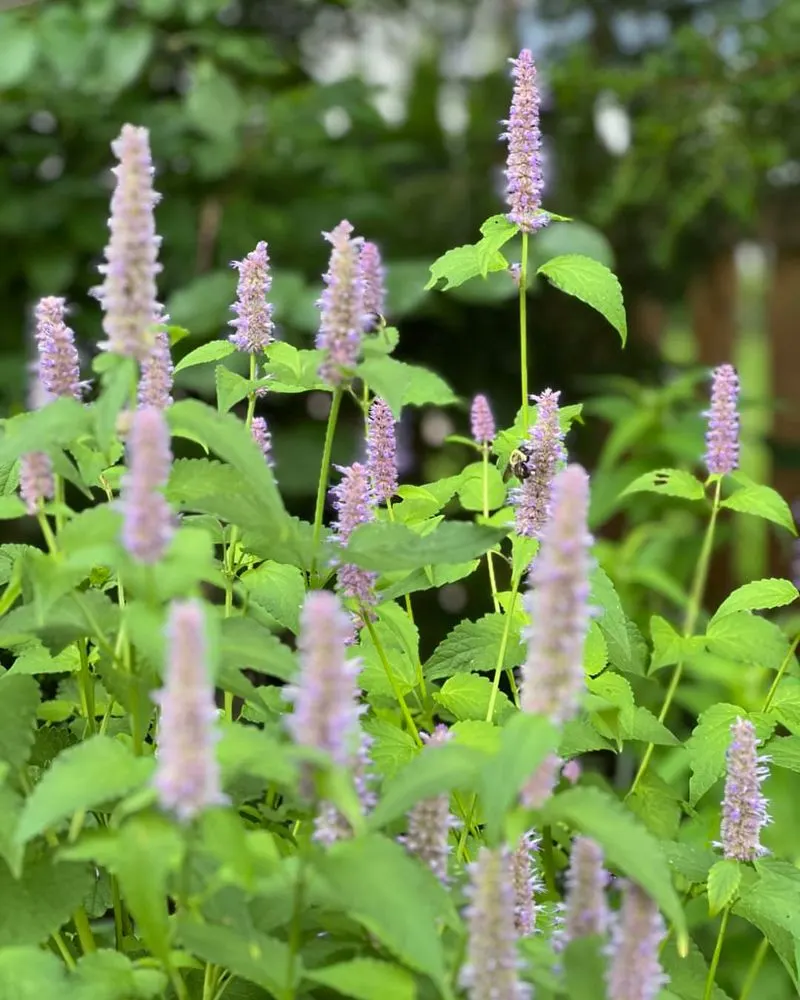
Anise hyssop, with its licorice-like flavor, is a delightful addition to teas and desserts. The tall spikes of purple flowers attract pollinators, making them a favorite among gardeners. In folklore, anise hyssop was believed to bring luck and protection. Its aromatic leaves and flowers infuse dishes with a unique taste that stands out. Easy to grow, it thrives in sunny locations with well-drained soil. The combination of its enchanting aroma and visual appeal makes anise hyssop a versatile choice for those seeking something different in their culinary endeavors.

